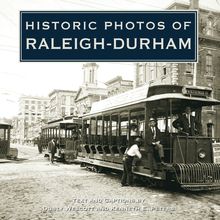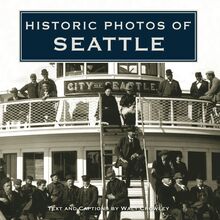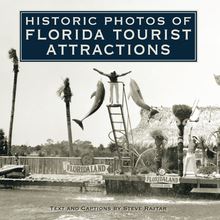Historic Photos of Outlaws of the Old West , livre ebook
194
pages
English
Ebooks
2010
Vous pourrez modifier la taille du texte de cet ouvrage
Obtenez un accès à la bibliothèque pour le consulter en ligne En savoir plus
Découvre YouScribe en t'inscrivant gratuitement
Découvre YouScribe en t'inscrivant gratuitement
194
pages
English
Ebooks
2010
Vous pourrez modifier la taille du texte de cet ouvrage
Obtenez un accès à la bibliothèque pour le consulter en ligne En savoir plus
Publié par
Date de parution
28 septembre 2010
Nombre de lectures
0
EAN13
9781618584212
Langue
English
Poids de l'ouvrage
9 Mo
From our earliest history, Americans have had an uneasy affection for our outlaws, especially those from the romantic period of the Old West. Whether it is the fearlessness and freedom they represent or some other psychological need, we often overlook the misdeeds of these people in our fascination with them.
This book is about their photographs. Some of the mythology is perpetuated in the captions and some new truths put forth as well. Viewing these photographs allows us to look these fellows in the eye and assess their character—something we probably wouldn’t have been allowed to do in real life and live to tell about it.
Historic Photos of Outlaws of the Old West includes nearly 200 photographs, reproduced in vivid black-and-white, with captions and introductions by writer and historian Larry Johnson. Here are the most legendary outlaws and many of the less infamous characters whose lives found a place in the story of the American West.
Publié par
Date de parution
28 septembre 2010
Nombre de lectures
0
EAN13
9781618584212
Langue
English
Poids de l'ouvrage
9 Mo
HISTORIC PHOTOS OF
OUTLAWS OF THE
OLD WEST
T EXT AND C APTIONS BY L ARRY J OHNSON
This is the stately town of Cheyenne, Wyoming, in 1876, which had shed its wilder days and become a proper capital city. It was at this time that Calamity Jane was working in the worst sort of whorehouse and convinced Wild Bill Hickok to allow her to join his expedition to Deadwood as a prostitute in exchange for whiskey.
HISTORIC PHOTOS OF
OUTLAWS OF THE
OLD WEST
Turner Publishing Company
200 4th Avenue North Suite 950
Nashville, Tennessee 37219
(615) 255-2665
www.turnerpublishing.com
Historic Photos of Outlaws of the Old West
Copyright 2010 Turner Publishing Company
All rights reserved.
This book or any part thereof may not be reproduced or transmitted in any form or by any means, electronic or mechanical, including photocopying, recording, or by any information storage and retrieval system, without permission in writing from the publisher.
Library of Congress Control Number: 2010926751
ISBN: 978-1-59652-579-5
Printed in China
10 11 12 13 14 15 16-0 9 8 7 6 5 4 3 2 1
C ONTENTS
A CKNOWLEDGMENTS
P REFACE
W E W ERE D RIVEN TO I T (1853-1876)
I M N OT A FRAID TO D IE LIKE A M AN F IGHTING, BUT I W OULD NOT L IKE TO BE K ILLED LIKE A D OG U NARMED (1876-1885)
W E N EVER S LEEP (1886-1895)
I F H E D J UST P AY M E W HAT H E S P AYING T HEM TO K EEP M E FROM R OBBING H IM , I D Q UIT R OBBING H IM (1895-1935)
N OTES ON THE P HOTOGRAPHS
Although robbing stagecoaches fell off significantly with the arrival of the railroads to most parts of the West, the risk of hold-up was still on the minds of travelers in mountainous areas where the stages slowed to a crawl while negotiating high passes. This drawing from 1885 depicts the hazard that travelers could face.
A CKNOWLEDGMENTS
This volume, Historic Photos of Outlaws of the Old West , is the result of the cooperation and efforts of many individuals and organizations. It is with great thanks that we acknowledge the valuable contribution of the following for their generous support:
Denver Public Library, Western History Collection
Kansas State Historical Society
Library of Congress
National Archives and Records Administration
Oklahoma Historical Society
Western History Collections, University of Oklahoma
Wikimedia Commons
-------
For my dad in memory of the countless hours of Westerns we watched together.
P REFACE
For the historian, writing about outlaws of the Old West always presents a challenge. Most of the available sources are suspect and unreliable. Newspapers, which are invaluable resources in some areas of history, are of dubious reliability when researching crimes in the lawless West. Firsthand accounts are spotty and the testimony full of holes. The writings of early historians often disagree and are rife with errors like misspelled names and incorrect dates. And then there are those interviews done in the 1930s with pioneers who knew Jesse James or Mysterious Dave Mather; always in the back of the mind is the old adage of the 1960s-if you remember it, you probably weren t there.
Modern research methods, digital records, and databases have helped dispel some of the myths and filled in some of the blanks of the outlaws lives, but the question remains-do we really want to know the truth? Is it even good for us to know the truth? It seems that one of the many legal traditions the United States inherited from our English forebears is our uneasy affection for our outlaws. It goes all the way back to Robin Hood. Those of us on the lower rungs of society find hope in knowing that a few among us are not afraid of our oppressors and have found the strength to fight the king or the railroad or the evil corporation or the encroaching government bureaucracy. We know the outlaws robbed and killed and stole, but the advocacy they represent is a powerful emotion.
Although their misdeeds were frequently exaggerated, it is possible to construct a composite profile of the outlaw. Most of the early outlaws of notoriety were former Confederate soldiers. Some returned home after the war to find it burned out; some returned home and found life oppressive under the thumb of the occupying Union forces and the carpetbagging Reconstructionists; some were restless after having seen other parts of the country; and some likely suffered from what we now identify as post-traumatic stress disorder. Even those who were not former soldiers typically experienced some sort of disruption in their youth, which is usually credited, whether or not it should be, for sending them down an errant path.
The typical outlaw usually started out an honest man. Some, like Butch Cassidy, made a youthful error in judgment and were made criminals by the rough-and-tumble frontier justice system, or their responses to it. Many started out as cowboys who were either tempted by the wild life at the end of the trail in places like Dodge City or began cutting a head or two from the herd to sell on the sly and ended up going to prison for rustling. If an outlaw started out as a farmer, he might end up choosing crime as his answer to a national economic depression or the ruthlessness of the railroads, which he blamed for making it impossible to earn a living at his chosen vocation. A typical gunslinger likely got into the killing business by accident, usually after a drunken brawl or a fit of anger.
Some outlaws planned on doing just enough crime to get them through a rough patch or to get together enough of a stake to turn legitimate. Jesse James tried at least twice to return to farming and Butch Cassidy got his nickname after he quit train-robbing for a while and worked as a butcher. But they almost always ended up dead or in prison by the age of thirty.
It s important to remember that part of the myth of the outlaws is that the West was violent. Certainly there were pockets of violence, but life in the West was no more violent statistically than life in the teeming cities of the East. More than likely, the perception developed because in the West life was rawer, lacking the veneer of society or the security of an established legal system. Likewise, in regard to outlaws, there were a few sociopathic killers, but they did not kill in great numbers nor were they overrepresented in the population. Most outlaws hid in remote areas and struck isolated targets, generally leaving the common man to his business.
This book is about the photographs. Some of the mythology is perpetuated in the captions and some new truths put forth as well. Viewing these photographs allows us to look these fellows in the eye and assess their character-something we probably wouldn t have been allowed to do in real life and live to tell about it.
- Larry Johnson
Around 1890, a local editorialist wrote of Flagstaff, Arizona, Shooting, killing and robbing seemed to be the order of the day. Our authorities, however, buckled on their armor and away they went for the outlaw element. The most notorious outlaw operating in that area was train-robbing murderer Jim Parker, who was hanged in 1897.
W E W ERE D RIVEN TO I T
(1853-1876)
Whatever one thinks of the now romanticized Confederate general Robert E. Lee one hundred and fifty years after the Civil War, it s difficult to deny that he performed a great service to the fractured nation when he instructed his defeated army, We must accept the situation. These men must go home and plant a crop, and we must proceed to build up our country on a new basis.
Lee made these comments in the face of the very real possibility of a decades-long guerrilla war in the South against occupying forces from the North. For the most part this did not happen, but in the western states the old divisions of the Civil War informed the actions and motives of many citizens, especially the outlaws. The best-known example of this is the James-Younger Gang. They learned their trade in the saddle from men like Confederate lieutenant colonel William Quantrill and Bloody Bill Anderson during their guerrilla raids along the war s western front. Over the ten succeeding years, they defined many of their own raids on banks and trains as strikes against former Union officers or Reconstruction profiteers. Other feuds were sparked by these festering wounds. For example, some of the trouble in early Dodge City erupted because many Texans felt they were mistreated by the ex-Union leadership in the town.
Outlawry in the late 1860s and 1870s was also inspired by haphazard settlement patterns in the West. Whether it was a gold rush in the mountains or a cow town on the Great Plains, the pattern often progressed from a rapidly populated camp of workers seeking instant riches; to the arrival of opportunistic purveyors of vice-gambling, prostitution, and whiskey-who sought to separate these workers from their earnings; to the larger corporate interests that moved in to organize the effort, invest the needed capital, and reserve most of the profit for the officers and shareholders; to finally the civilizers who came to build homes and businesses and schools. The outlaw existed in the fluid period between these stages, often in the absence of laws and organized governance. Some were men who had lost everything and turned to crime out of desperation, while others simply found it easier to steal the hard-won wealth of others than to work for it themselves. With few exceptions, most outlaw actions in this period were episodes of banditry perpetrated by lone men or small groups against stagecoaches and mining companies, since trains and banks were practically nonexistent in the West of this day.
After 1849, thousands of gold seekers flocked to California, giving rise to friction with the region s small Hispanic population. Joaquin Murrieta was a californio who is supposed to have protested the injustices done by these settlers in the 1850s, by rustling and robbing them as a sort of Robin Hood. Conventional historical a














